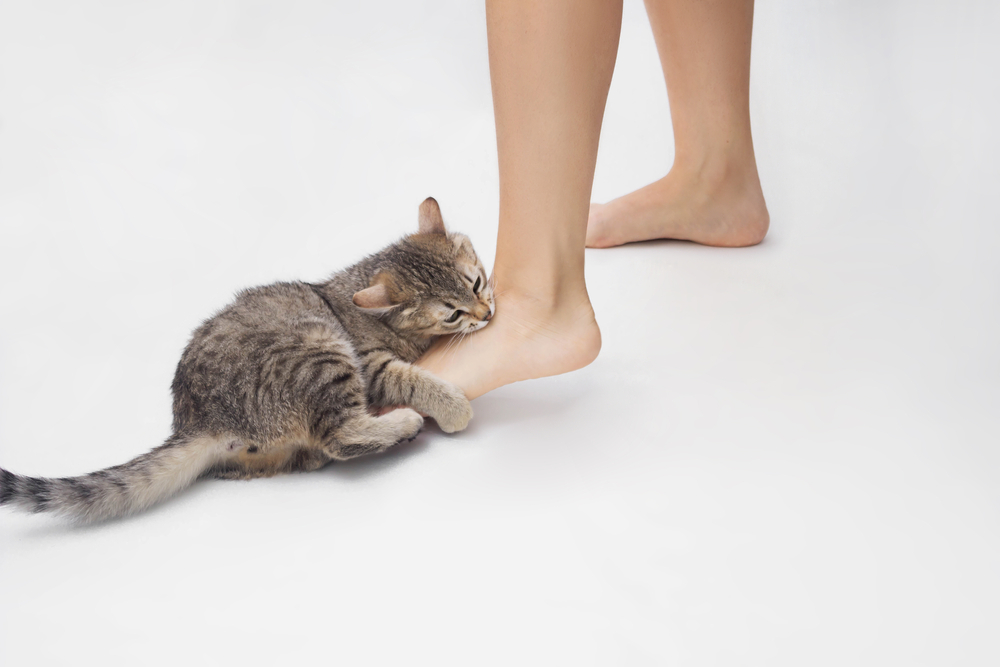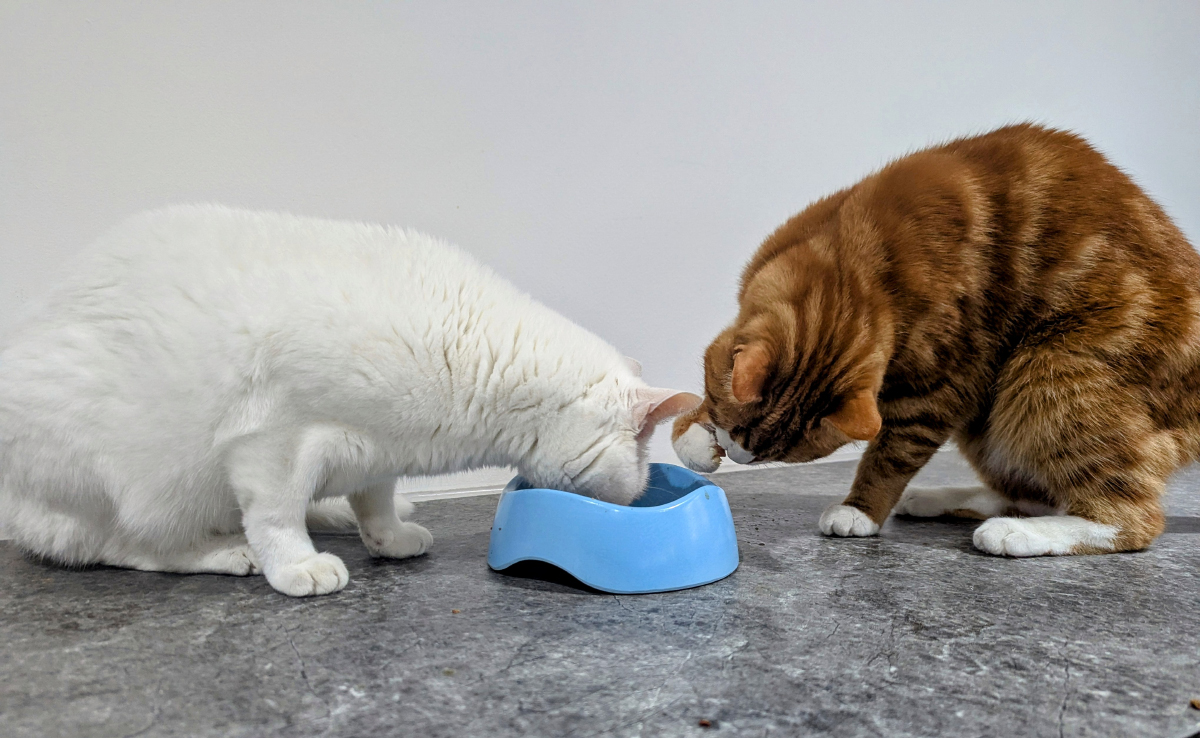Cats like to bite playfully, but the bites aren’t meant to puncture the skin. However, if you sustain a cat bite that draws blood, you may have more to worry about. Cat bites can become infected, which can be a hazardous complication. Cats have plenty of bacteria in their mouth that can lead to infections if transferred into your bite wound.
Infected people can experience flu-like symptoms, but they may require surgery and extensive medical treatment in severe cases. That is why it is imperative to recognize the early warning signs of a cat bite infection and get proper treatment immediately.

The 7 Symptoms to Look for in Cat Bite Infections
1. Heat
Does the spot where you suffered a cat bite feel hot to the touch? If it does, you are experiencing a common sign of infection1. When a portion of your skin is hotter than the surrounding area, your internal body temperature in the spot is rising.
The white blood cells in your body are fighting off the infection, and increased blood flow in the area could also cause a temperature increase.
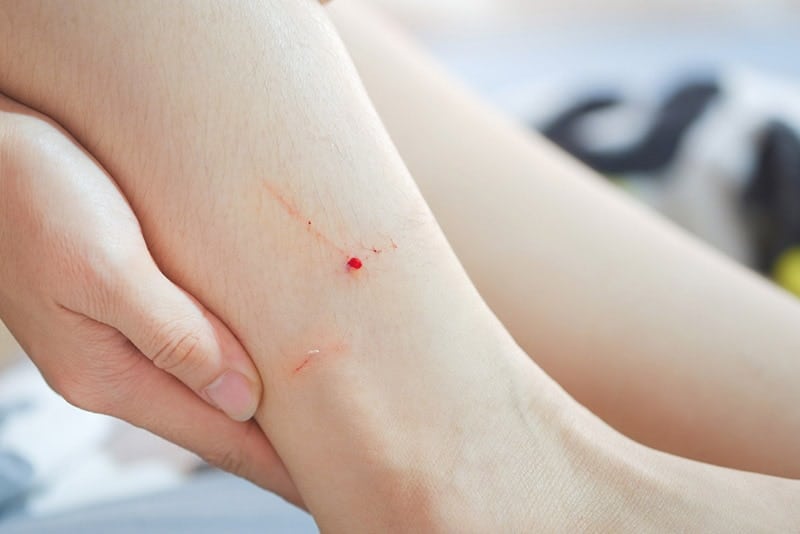
2. Redness
If the area surrounding the cat bite has begun to turn red, it also indicates that your body may be fighting off an infection2. The redness can vary from a light dusting of pink to a strong, angry red.
Watch for any signs that the redness may be spreading. If the redness spreads, it can be an early warning sign of sepsis or blood poisoning3. If you suspect that you have sepsis, get emergency medical help immediately.
3. Discomfort
It is normal to experience discomfort after a cat bite has punctured your skin. However, the discomfort should gradually begin to fade away. If any pain persists or worsens, it is a cause for concern. When a cat bite has become infected, the pain increases and spreads to nearby tissues. Rather than try to fight off the pain with painkillers, reach out for medical assistance.
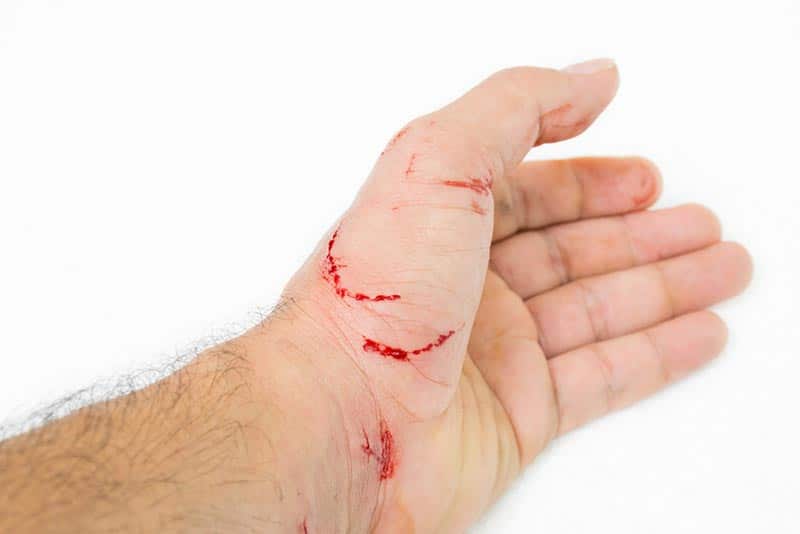
4. Swelling
A more obvious sign that something is going wrong inside your body is swelling. It should be a huge red flag if your cat bite is swelling up. Regarding injuries, swelling goes hand in hand with inflammation, and you may experience redness and heat simultaneously.
Swelling can cause the area to become enlarged and more tender than usual. If you are experiencing swelling around a cat bite, an infection has likely taken root.
5. Odor
The wound’s odor is another vital sign of an infection. An odor can be emitted from a cat bite for several reasons, such as chemicals being released from bacteria, wound drainage, or even necrosis (also known as dead tissue).
Additionally, if the cat bite is not adequately attended to, the injury may begin to smell foul due to poor hygiene. A foul odor coming from your wound may be difficult to discern at first, but once you notice it, you must take prompt action to prevent the condition from worsening.
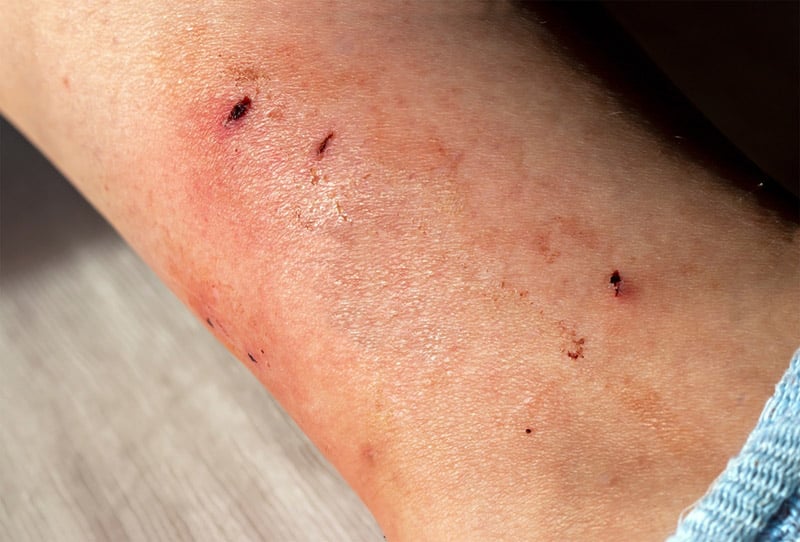
6. Pus or Discharge
Pus or any other kind of discharge from the wound indicates an infection. If the bacteria from a cat’s mouth is trapped within your wound, pus or other fluids can accumulate. The discharge will likely be yellow, white, or brown and may be somewhat thick.
The drainage is often a combination of the white blood cells that are trying to ward off the infection and the bacteria that caused the infection in the first place.
7. Fever
A fever is a rise in your body’s temperature, and it’s a serious sign of infection from a cat bite. A human’s body temperature is around 98.6 °F, and any temperature over 100 °F is generally considered a fever.
You will likely experience chills, shivering, sweating, headaches, and body aches if you have a fever. You may also be dehydrated and weak and experience irritability and a loss of appetite.


Treatment for Cat Bites
If you’ve developed an infection from a cat bite, a medical professional will wash the wound, remove the dead tissue, and apply an antibiotic ointment. X-rays may be recommended to verify that underlying bones are not damaged or showing signs of infection.
Most likely, your doctor will prescribe antibiotics for the infection. You may need to get a tetanus booster if you haven’t received the vaccine in recent years. Depending on the severity of the injury, stitches or surgery may be necessary.

Conclusion
Cats are adorable creatures, but they can injure us accidentally (or on purpose) with their teeth. If you sustain a cat bite that punctures the skin, wash it thoroughly before bandaging it, report it to your physician, and keep a close eye out for any signs of infection.
If you see the signs of a possible infection, consult a medical professional immediately. The sooner you seek help, the sooner you will be able to get the treatment you need.
Featured Image Credit: Marina-Demeshko_Shutterstock

